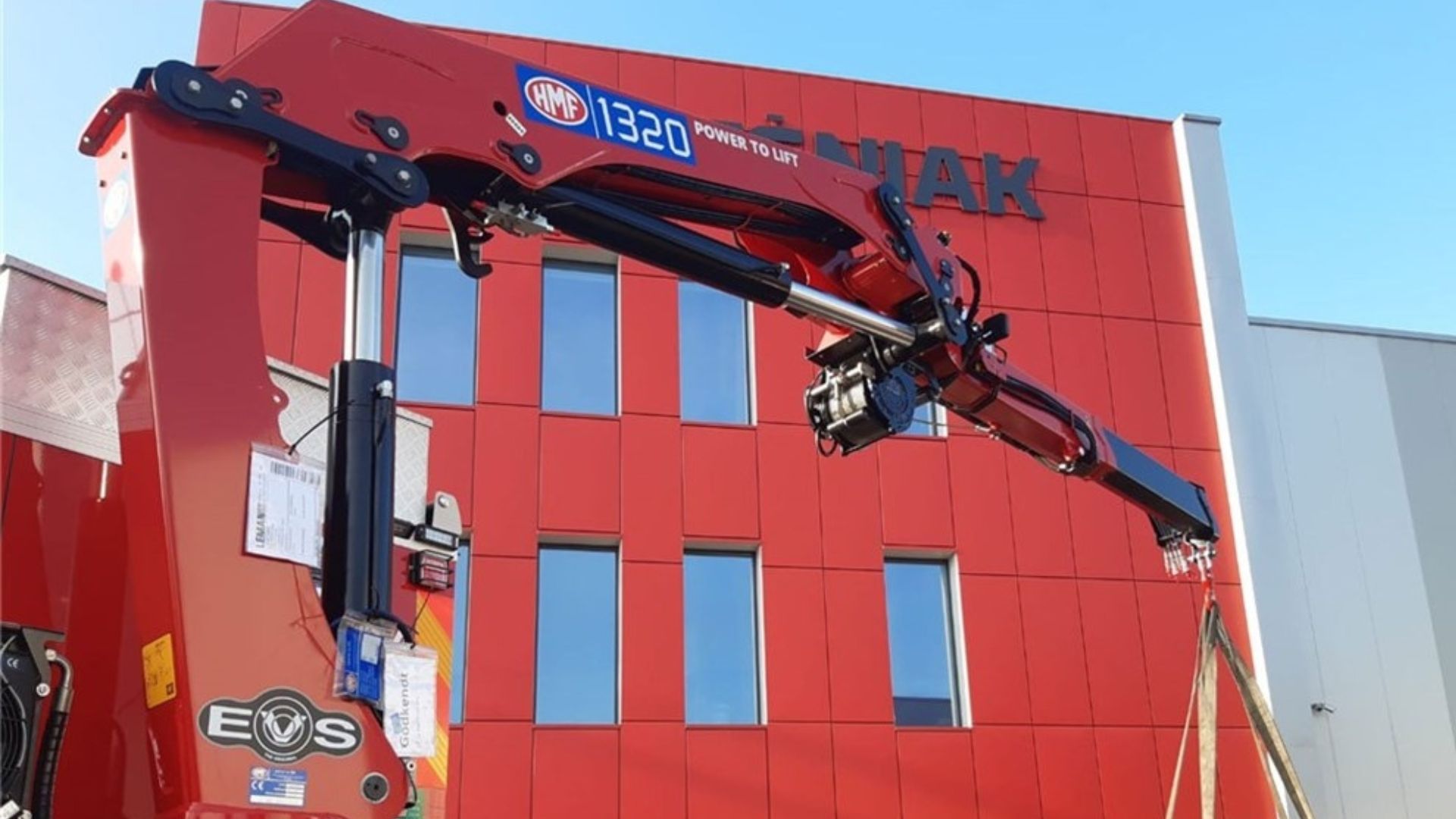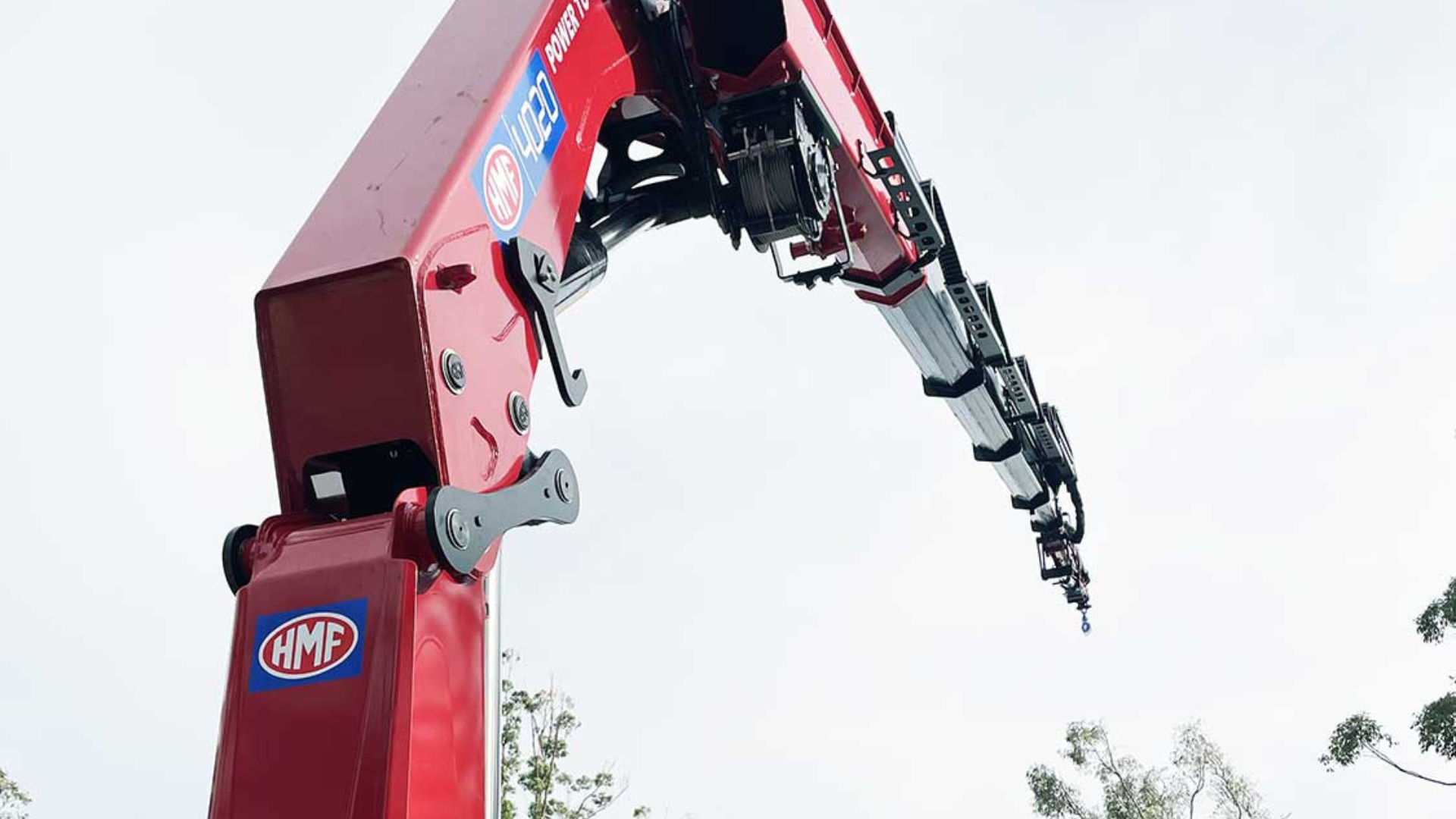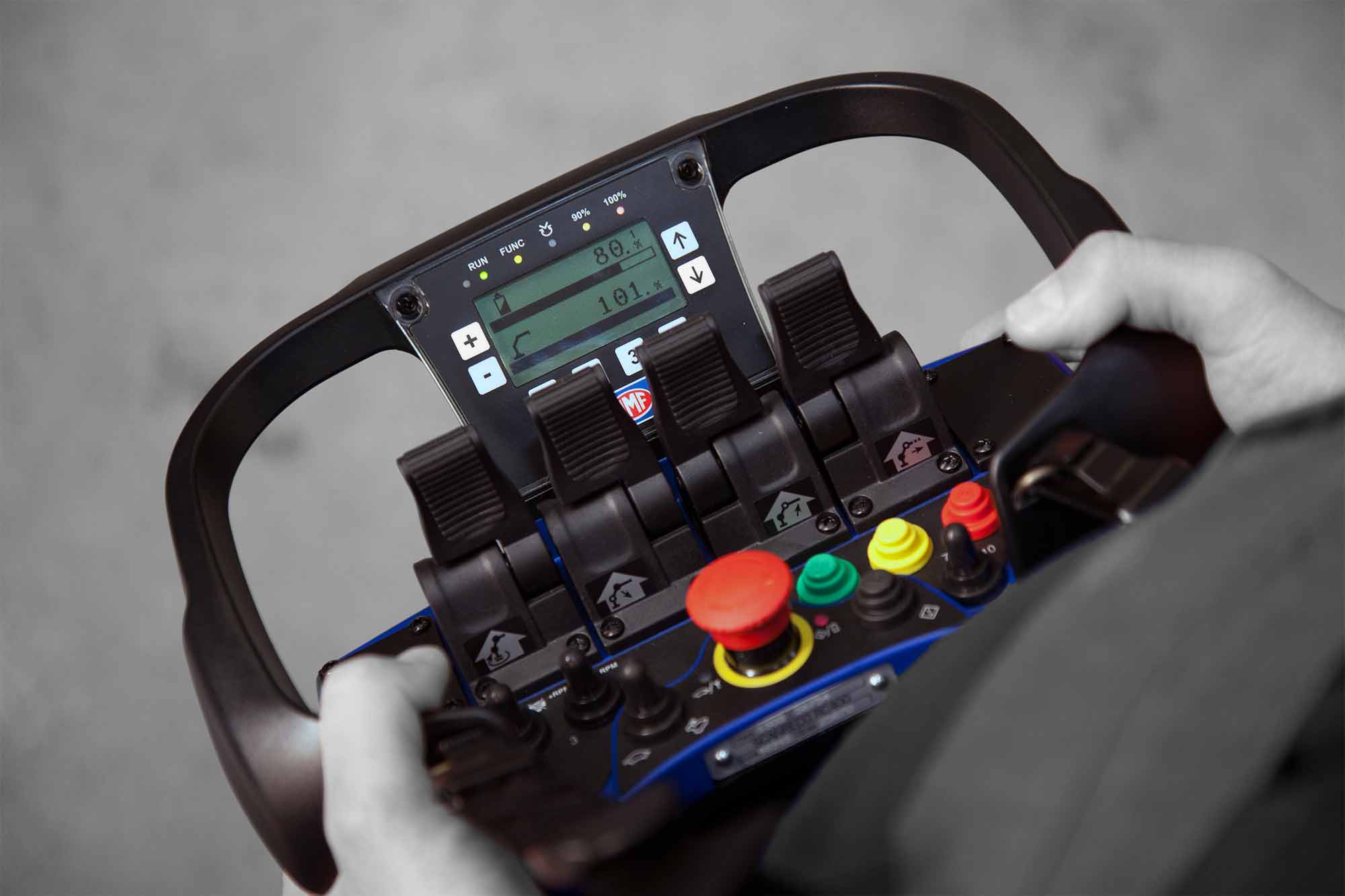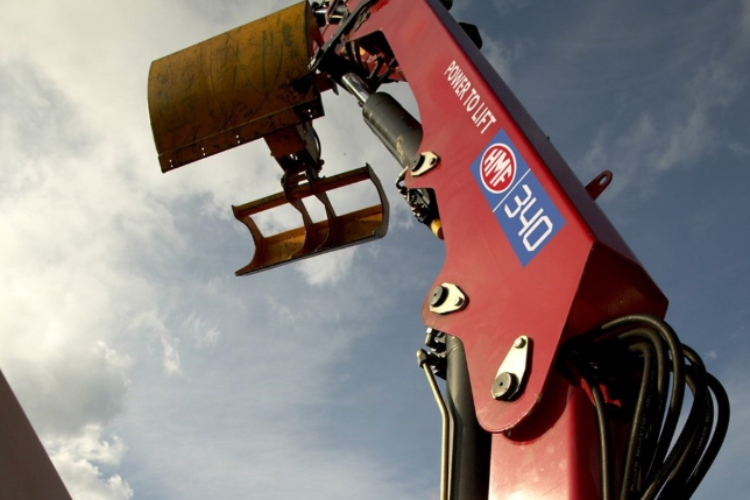In the construction and transport logistics industries, the truck crane is a central piece of operational equipment. The performance of this machinery is paramount, reducing loading and unloading time and increasing the safety and efficiency of the site. However, one size does not fit all, and with the wide range of truck cranes available, it is vital that you select one that suits your logistical needs perfectly.
One primary factor is the crane’s load capacity, that is, how much it can safely lift and move. The mechanics of load capacities are important to consider when selecting and operating a crane, as exceeding load capacity can lead to safety risks, equipment failure, operational delays, and even legal issues.
What is the Load Capacity in a Truck Crane?
At its simplest, load capacity is the maximum weight that a crane can safely lift. This is the absolute limit that a crane should be operated at, as pushing past the loading capacity comes with risks to the crane and equipment, the load, and especially personnel. Understanding the limit ensures a safe and efficient project execution, but what goes into determining the load capacity?
The load capacity can be the result of several factors, including the design of the crane, boom length, the angle at which it carries the load, and whether there are any stabilisers or outriggers. All these factors go into the calculations of determining load capacity and operational guidelines. On all modern vehicle loading cranes, there are sensors and computers that will not let the crane lift past its lifting capacity.
Key Load-Related Terminology and Metrics
There is no single load capacity for a crane, as different factors, such as the amount of hydraulic outreach, will affect the final figure. The terminology surrounding load-related metrics can seem daunting at first, but they are simply terms and concepts used by the industry to operate a crane safely.
Maximum Rated Capacity vs. Net Load: The maximum rated capacity is the absolute maximum weight a crane can lift safely, including its own components, such as the crane hook. The MRC will be impacted by the specific working configuration of the crane and its working conditions, such as how the boom is positioned or extended. The net load is simply the weight of the load being carried.
Load Chart Basics: Every crane will have a load chart from the manufacturer. It includes a table that crane operators can use to determine the correct lifting capacity based on the specific angle of the boom, how long it is, and how far it is extended.
Tonne-Metre Rating: The tonne-metre rating is how much load the crane could theoretically lift 1 meter from the centre of the column, ignoring the crane’s own weight. This rating is what helps a business choose the right truck crane for a job. For heavy-duty construction tasks, a crane with a high tonne-metre rating is ideal, while for lighter and more general-purpose tasks requiring more precision, smaller tonne-metre ratings are best.
Understanding Load Capabilities with Our Most Popular Truck Crane
At HMF Australia, our most popular truck crane is the HMF 1130K-RCS. To help illustrate how load capacities can be determined, we will use this model as an example to break down some key load-related metrics.

Hydraulic Reach (m)
Hydraulic reach refers to the crane boom’s maximum horizontal extension and determines how far the crane can place or lift loads away from the truck. However, the crane’s lifting capacity decreases the further the boom is extended.
HMF 1130-K5-RCS Example: The HMF 1130K-RCS has a hydraulic reach of between 5.5 (K1) and 14 (K5) metres. An 1130-K1 will have a maximum hydraulic reach of 5.4 meters, where it will lift 1940kg. The 1130-K5 will have a maximum hydraulic reach of 13.9m, where it can lift 540kg.
Slewing Angle (°)
The slewing angle is the complete rotational range of the crane’s boom. This determines its angle of operation before the truck it is mounted on has to be repositioned. A larger slewing angle means greater flexibility in moving loads around the crane without reaching the end of the rotation.
HMF 1130K-RCS Example: The HMF 1130K-RCS has a slewing angle of 420°, which means it can pivot 60° more than a full complete rotation, offering significant flexibility in its operation and enabling operators to move and place loads in a wide area. This makes this model perfect for use in confined construction spaces or on work sites that require precise load placement.
Lift-to-Weight Ratio
The lift-to-weight ratio measures the crane’s lifting efficiency by comparing its maximum lifting weight to the weight of the crane itself. A higher lift-to-weight ratio means greater efficiency, as the crane can lift heavier loads relative to its own weight. HMF generally offer cranes with the highest lift-to-weight ratio compared to comparable crane sizes from other competitors.
How Load Capacity Affects Project Planning
The project planning of a construction project is a complicated venture, to say the very least, and one that requires a balance of engineering to accomplish a build safely, efficiently, and successfully.
Matching a crane to a project’s needs can be costly, both in terms of equipment upgrades and the delays involved in modifying existing machines. The crane should ideally already be perfectly suited for the task at hand, and so assessing a crane’s lift capacity can give planners a firm idea of which cranes are suitable for certain stages of the construction project.
While the computer on modern HMF cranes won’t allow it to become overloaded, choosing the right capacity is crucial with regard to safety and compliance. Overloading a crane can cause catastrophic equipment failure, leading to damage to the construction site, a broken crane or damaged rigging, or injury or worse to personnel. Even if nothing goes wrong at the time, there are also the legal and regulatory implications of overloading a crane, which can involve expensive fines or site shutdowns.
There is also the element of cost efficiency to consider. For instance, a crane that comes with a higher-than-necessary capacity will increase operational costs, both through hiring and fuelling. On the other hand, a crane with insufficient capacity will need to be replaced, which leads to project delays and the added expenses for hiring additional equipment.
Common Mistakes When Assessing Load Capacity Needs
Safe crane operation requires knowledge and awareness of the crane’s limitations and its optimal parameters for use. The following are some of the more common mistakes made when assessing a crane’s load capacity.
- Underestimating Load Requirements: Underestimating the weight or dimensions of a load can shut down the job site as new cranes have to be brought in mid-project to avoid dangerous lifts.
- Not Considering Load Radius and Boom Position: Changes in the angle and reach of the boom will affect the crane’s lifting capacity. Remember, the further the tip of the boom is from the crane’s centre, the lower its lifting capacity will be.
- Ignoring Environmental Factors: Weather conditions can turn a safe lift into a dangerous one. Factors like wind speed, uneven terrain, and wet or soft ground conditions can impact a crane’s stability and reduce its safe load limits.

Practical Steps for Assessing Load Capacity Needs for Your Project
Consider the following practical steps to accurately assess the load capacity needs for your next project.
- Site and Project Assessment: Working through each stage of construction, consider which loads are going to be the heaviest, what their shapes are, and where their intended placement is. This will help determine the range tonne-metre rating required, particularly if a heavy lift requires a near-horizontal boom reaching out.
- Working with Load Charts: Each crane comes with a crane load chart to calculate the parameters of its lifting ability close to the column and with an extended boom or jib. Ensure that all lifts are within a crane’s capacity regarding boom angles and load positions before purchasing or hiring the crane for the job.
- Consulting with Experts: Speak with a crane specialist or engineer for an outside opinion to ensure proper capacity assessment. This is true for all jobs, but especially for complex or high-risk projects.
1. Small Duty Jobs (3-9 tonne-metres)
Cranes in this range are suitable for light construction work, landscaping, earthmoving, and the installation of signage or smaller equipment.
2. Medium Duty Jobs (20-28 tonne-metres):
This bracket is best for handling heavy construction materials, loading and unloading shipping containers, and positioning larger structures.
3. Heavy Duty Jobs (32-95 tonne-metres):
At the highest end, these cranes are reserved for high-stakes tasks, like lifting prefabricated structures, assisting with large-scale construction, or working on oil rigs, in mining, or on similar industrial or resource-extraction sites.
Choosing the Right Truck Crane Based on Load Capacity
Combining mobility and strength, the truck crane is a popular choice for construction projects where flexibility around obstacles is key to success. Available HMF models range from precise and convenient 3 to 9-tonne machines right up to our powerful 95-tonne loading cranes, with everything in between.
- Aligning Crane Specifications with Project Demands: Bigger isn’t always better, and while an immensely powerful crane will have no issues handling most lifts on a construction site, the additional cost of operating it will be a hit to the project’s bottom line. Instead, match a crane’s load capacity with project requirements, accounting for lift heights, distances, and the frequency of heavy lifts.
- Future-Proofing for Versatility: Investing in a truck crane is no small thing, so consider your business’s needs in the years ahead and anticipate what might be required in future projects. Choosing a crane with slightly more capacity than needed right now allows for future flexibility without overspending.
Safety Measures for Managing Load Capacity
Modern cranes are incredibly safe, but their operation still comes with the risk of accidents if construction professionals don’t have the experience or understanding of their limits. The following are a range of safety measures that modern crane operators use as a solution to help remain safely within the crane’s limits.
- Load Moment Indicator (LMI) and Load Moment Limiter (LML): These electronic safety devices are responsible for monitoring the crane’s load moment. If the load moment nears or exceeds the limit, the LMI and LML alert the crane’s operators and restrict the boom’s movement automatically.
- Boom Angle and Reach Limiters: Like the LMI and LML, these limiters automatically stop the boom from reaching unsafe angles or lengths, which helps to prevent the crane from becoming unbalanced and tipping over.
- Stabilisers and Outriggers with Sensors: These sensors take readings to calculate the crane’s overall stability with relation to the ground, restricting the movement and angle of the boom if stability is compromised. This is particularly important when lifting loads on unstable or uneven ground.
- Overload Protection Systems: Overload occurs when a load is too heavy for the crane’s boom to lift, and these overload systems work to disable lifting functions if an overload is detected. This prevents damage to the crane’s components and the risks involved in an unsafe, overloaded lift.
- Anti-Two-Block System: Two-blocking is an accident that occurs when the crane’s hook block comes into contact with the boom tip. This typically happens when the boom is at a high angle, so this system halts hook block movement before a collision can occur.
- Operator Warnings and Alerts: A series of alarms and lights on the operator’s dashboard keeps the driver alert as to how close a load is to the crane’s capacity limits.
- Automatic Shutdown: Some modern cranes will automatically shut down if the load moment is exceeded and will only reactivate once the load distribution is returned to within safe parameters.
- Rigorous Training and Maintenance: The best safety measures are proper training for operators and regular maintenance of the crane’s safety equipment mentioned above. Operators should always know crane use regulations and the limits of the machine in use.
The Role of the HMF EVS System in Operator Safety

Real-Time Stability Monitoring
The HMF EVS system continuously monitors the vehicle’s stability by monitoring boom inclination, extension, and load weight distribution. If the vehicle approaches an unsafe tilt, the system alerts the operator and automatically halts the lift until the issue is resolved.
Prevention of Tipping Hazards
Restricting crane movement at the first sign of instability, even when nearing maximum load capacity, the EVS system minimises the risk of tipping.
Reduced Operator Error
The EVS operates as a backup fail-safe system to operator knowledge, reducing total reliance on operator judgment.
Enhanced Load Capacity Management
Because the EVS is constantly calculating load capacity, it allows operators to get closer to the crane’s upper lifting limits while remaining secure that they are still within safe operating parameters. Calculating the risk manually would likely mean the operator decreases their estimated upper limits to reduce operational risk.
The Right Crane for the Right Job
Every crane, truck cranes included, comes with its own set of operational parameters that ensure its safe and effective use. Understanding and respecting these limits, including load capacity, load moment, hydraulic reach, and others, is vital to maintaining your equipment well into the long term and providing a safe environment on your job site.
Remember to always consider the above-mentioned factors carefully when planning your next crane purchase or rental. The best crane for the job is one that exceeds the highest operational limits, but not by too much, as you want a machine that can handle every load, but that does not eat up your budget in unnecessary running costs. If you are buying, consider also future-proofing your business by purchasing a more powerful model to handle anticipated future jobs.
Inform your decision-making by also considering modern and advanced safety features like EVS to improve safety outcomes.
HMF: Your Partner in the Truck Crane Industry
For more information about understanding truck crane load capacity or for advice on your next purchase or hire, contact the expert and experienced team at HMF Australia. With a wide range of truck crane options from small jobs requiring the utmost precision to large construction jobs lifting tonnes of steel and concrete, HMF Australia has the truck crane option for you.
Get in touch with us today for expert advice on selecting the right truck crane for your next project.

